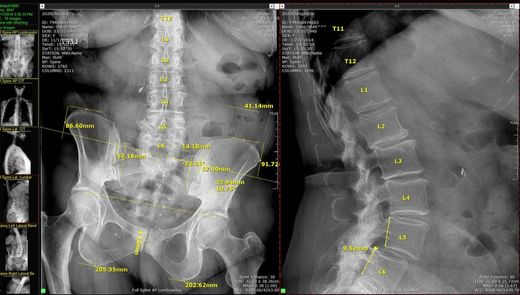What can Chiropractic help with?
- Back pain
- Neck pain
- Headaches
- Sciatica
- Joint pain
- Disc and Nerve Issues
- Muscle tension and stiffness
- Nerve Impingements
- Sports injuries
- Whiplash
- Posture problems
- Arthritis
- Carpal tunnel syndrome
- Pregnancy-related discomfort
- Digestive discomfort, Cramps
- TMJ disorders
- Scoliosis
- Stress and tension-related ailments
What is Chiropractic care?
Chiropractic care is a healthcare discipline that focuses on diagnosing, treating, and preventing musculoskeletal disorders, particularly those affecting the spine. While individual experiences and outcomes may vary, some potential benefits of chiropractic care include:
- Pain relief: Chiropractors use manual adjustments and other techniques to help alleviate pain, particularly in the back, neck, and joints. These adjustments aim to reduce pressure on nerves, improve joint mobility, and promote natural healing.
- Improved mobility and flexibility: Chiropractic adjustments can enhance joint function and range of motion, making it easier to perform daily activities and engage in physical exercise or sports.
- Enhanced posture: Chiropractors can help address postural imbalances and alignment issues, which may be caused by factors such as prolonged sitting, improper ergonomics, or repetitive movements. By correcting spinal alignment, chiropractic care may contribute to better posture.
- Reduced reliance on medication: Chiropractic care offers a non-pharmaceutical approach to pain management. For individuals seeking drug-free alternatives or looking to reduce their dependence on pain medications, chiropractic treatment may provide relief and potentially lower the need for medication.
- Holistic approach to health: Chiropractic care often emphasizes overall wellness and takes into account factors such as lifestyle, nutrition, and exercise. Chiropractors may provide guidance on ergonomics, stretching exercises, strengthening activities, and other lifestyle modifications to support patients in achieving better health.
- Injury prevention: By addressing musculoskeletal imbalances, chiropractic care may help reduce the risk of future injuries. Maintaining proper spinal alignment and joint mobility can contribute to improved body mechanics, reducing the strain on tissues and minimizing the likelihood of injuries during physical activities.
- Complementary to other treatments: Chiropractic care can be used in conjunction with other healthcare interventions. Chiropractors often collaborate with medical doctors, physical therapists, and other healthcare professionals to provide a comprehensive and integrated approach to patient care.
How does an adjustment work?
A chiropractic adjustment, also known as spinal manipulation, is a manual therapy technique commonly performed by chiropractors. It involves applying controlled, sudden force to a specific joint in the spine or other parts of the body. The goal of a chiropractic adjustment is to improve joint mobility, reduce pain, and enhance the overall function of the musculoskeletal system. Here's a simplified explanation of how a chiropractic adjustment works:
- Assessment: Before performing an adjustment, the chiropractor will conduct a thorough assessment, which may include a physical examination, medical history review, and possibly diagnostic imaging, to determine the most appropriate treatment approach.
- Targeted Joint: The chiropractor identifies the specific joint or area of the body that requires adjustment based on your symptoms, examination findings, and their expertise. It could be a joint in the spine or other parts such as the shoulders, hips, or extremities.
- Manual Adjustment: Using their hands or specialized instruments, the chiropractor applies a controlled and precise force to the targeted joint. This force is directed to restore normal joint alignment, improve joint mobility, and reduce any restrictions or misalignments that may be affecting nerve function or causing pain.
- Release of Pressure: The adjustment often produces a "popping" or "cracking" sound, which is the result of gas bubbles being released from the joint. This sound is known as cavitation and is harmless.
- Sensation and Immediate Relief: You may experience a sense of relief or a reduction in pain immediately after the adjustment. This is because the adjustment can stimulate the nervous system, release endorphins, and promote better blood flow, which can alleviate pain and improve overall well-being.
- Follow-up Care: Depending on your condition, the chiropractor may recommend a series of adjustments or additional therapies to support the healing process and maintain optimal spinal health. This may include exercises, stretches, lifestyle modifications, or other complementary treatments.
Is Chiropractic safe?
Chiropractic care has been found to have a good safety record overall. Here are a few key studies and resources that highlight the safety of chiropractic treatment:
- The Safety of Chiropractic Manipulation of the Cervical Spine: A Prospective National Survey: This study, published in Spine, examined the safety of cervical spine manipulation performed by chiropractors. The researchers concluded that the risk of serious adverse events following cervical spine manipulation was extremely low.
- Adverse Events from Spinal Manipulative Therapy in the Pediatric Population: A Systematic Review: This systematic review, published in the Journal of Manipulative and Physiological Therapeutics, investigated the safety of chiropractic spinal manipulative therapy in children. The findings suggested that adverse events associated with pediatric chiropractic care were rare and usually mild, such as soreness or stiffness.
- Chiropractic Care for the Cervical Spine as a Complementary Treatment for Neck Pain: A Systematic Review: This systematic review, published in The Spine Journal, evaluated the safety of chiropractic care for neck pain. The study found that serious adverse events associated with chiropractic cervical spine manipulation were rare.
- Chiropractic Care and Risk for Acute Lumbar Disc Herniation: A Population-Based Self-Controlled Case Series Study: This population-based study, published in European Spine Journal, investigated the relationship between chiropractic care and the risk of acute lumbar disc herniation. The findings indicated that chiropractic visits were not associated with an increased risk of acute herniated lumbar disc.
- Safety of Chiropractic Interventions: A Systematic Review: This comprehensive systematic review, published in Spine, examined the safety of chiropractic interventions. The review concluded that serious adverse events associated with chiropractic care were rare, and most reported adverse events were mild, self-limiting, and similar to those seen with other healthcare interventions.

